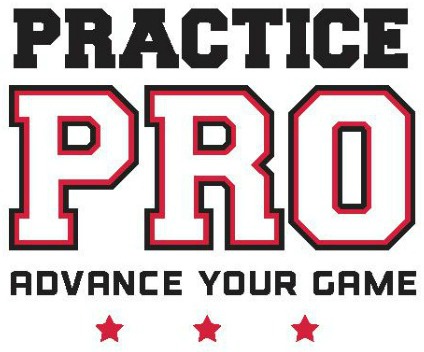14 Common Misconceptions About Pitching - Part 3 of 3
/Over the past few weeks, we've unpacked some of the biggest myths in softball pitching—from the belief that speed trumps all, to the misconception that lessons are only for “serious” athletes. In this third and final installment, we explore the hidden assumptions that keep pitchers from reaching their potential, including local competition, pitch variety, performance feedback, and the vital role of parents. If you've been following this series, you’ll see how these final truths bring everything full circle.
11. “My daughter will reach her full potential by playing in local travel tournaments and on a city high school team. Illinois competition is enough to elevate her to the NCAA or the state finals.”
At Practice Pro, we’ve set a Big, Hairy, Audacious Goal: to see 8 pitchers from Illinois compete in a single Women’s College World Series by 2035. When we first set this vision back in 2016, only one Illinois pitcher had reached the WCWS in the entire decade prior. While we've seen encouraging progress in the last few years (see below!), there’s still a lot of ground to cover.
Illinois softball—especially in the city—is evolving, but not without its challenges. At one time, the IHSA granted the city tournament champion an automatic berth in the state bracket. That policy was eventually discontinued after repeated lopsided defeats, and city teams were merged with nearby suburban schools to raise the level of competition.
Still, momentum is building. Thanks to the rapid development of feeder programs on Chicago’s North Side over the past 5–10 years, city teams are starting to close the gap. But to truly compete on a national scale, we’ll need a lot more good competition
High-level travel teams exist because competition varies dramatically across regions. If your daughter has big goals, don’t stay locked in the local northern Illinois, or even Midwest bubble. Great teams—and great exposure—often require getting on the road.
Alex Storako – University of Oklahoma (2023)
Hometown: Frankfort, IL
High School: Lincoln-Way East
Travel Team: Beverly BanditsMack Leonard – Florida State University (2023)
Hometown: Normal, IL
High School: Normal Community
Travel Team: BNGSA AngelsRegan Krause – Stanford University (2023, 2024)
Hometown: Pontiac, IL
High School: Pontiac High School
Travel Team: Beverly BanditsEstelle Czech – University of Texas (2024)
Hometown: Downers Grove, IL
High School: Downers Grove North
Travel Team: Beverly BanditsDani Drogemuller – Duke University (2024)
Hometown: Frankfort, IL
High School: Lincoln-Way East
Travel Team: Beverly Bandits
12. “I only need 3 pitches to be effective at a top level.” Or: “I need 7 pitches.” Which one is true?
The real answer? It depends—on the level, the coach, and the athlete. One ACC pitcher throws just three pitches: changeup, riseball, and screwball (no fastball). Meanwhile, a top DIII coach looks for athletes with four main pitches and two solid backups. The variation is wide, but one thing is clear: no matter how many pitches a player has, they must be exceptional at them.
Want to know what your daughter needs? Ask the coaches from the teams she dreams of playing for. Find out what their current pitchers throw. Then build your roadmap accordingly.
13. “My drop ball just moved! My rise ball moved! I hit the spot!”
Pitchers often believe they’re achieving results they’re not quite hitting—understandably so. It’s easy to misjudge movement and location. But one of my most important roles as a coach is to give honest feedback and teach parents how to recognize progress realistically.
Location is location, no matter the pitcher’s age. But expectations should be age-appropriate. If a pitcher is constantly discouraged because she isn’t hitting spots, the solution isn’t to lower the bar or pretend a ball moved—it’s to adjust the game and goals to where she is developmentally.
Want to see what real movement looks like? Catch for one of our college athletes at pitching school (with a mask on!). It will change your perspective—and give you the language to help your daughter truthfully.
14. “I can drop my daughter off at lessons—someone else will teach her how to pitch.”
The hard truth? Pitching is different than any other position in softball. I’ve never seen even a moderately successful pitcher—playoff contender, top house league performer, or B-level travel athlete—who didn’t have a parent actively involved. The most consistent performers have parents who learn the mechanics, catch regularly, enforce routines, and show up every week.
Pitching is uniquely vulnerable. When things go wrong on the mound, there’s nowhere to hide. Yet many new softball parents underestimate how technically difficult pitching is, how many reps it demands, and how lonely it feels when your daughter is expected to perform without proper preparation.
Dropping off your kid without support might seem convenient—but it leaves her stranded when it matters most.


